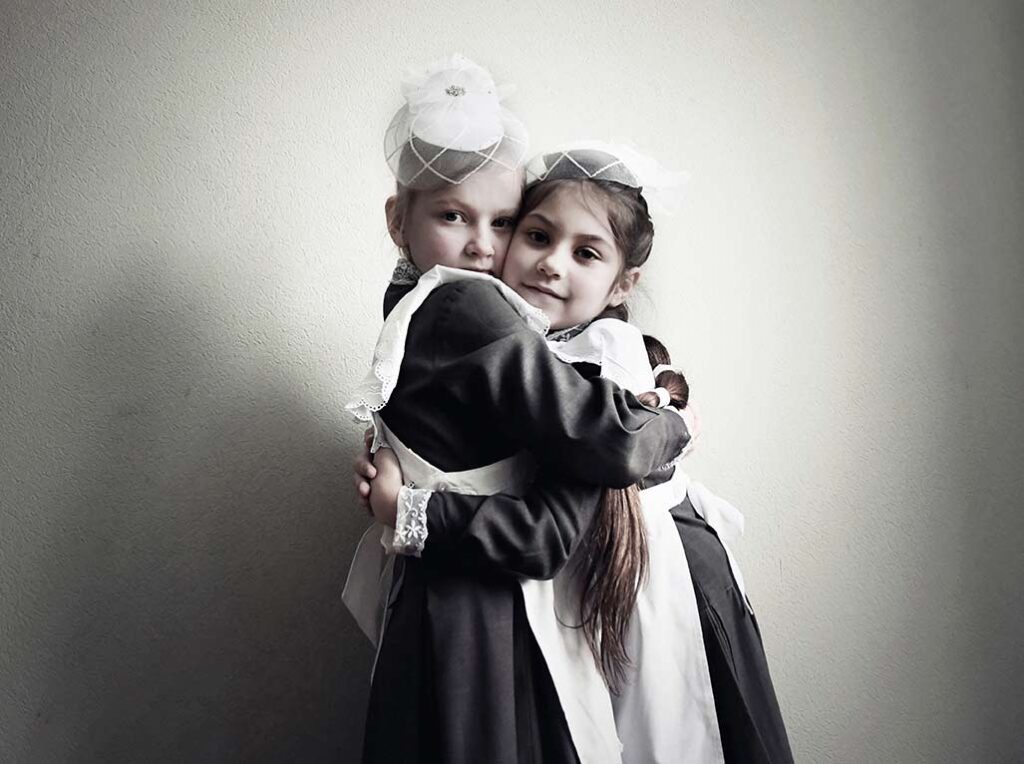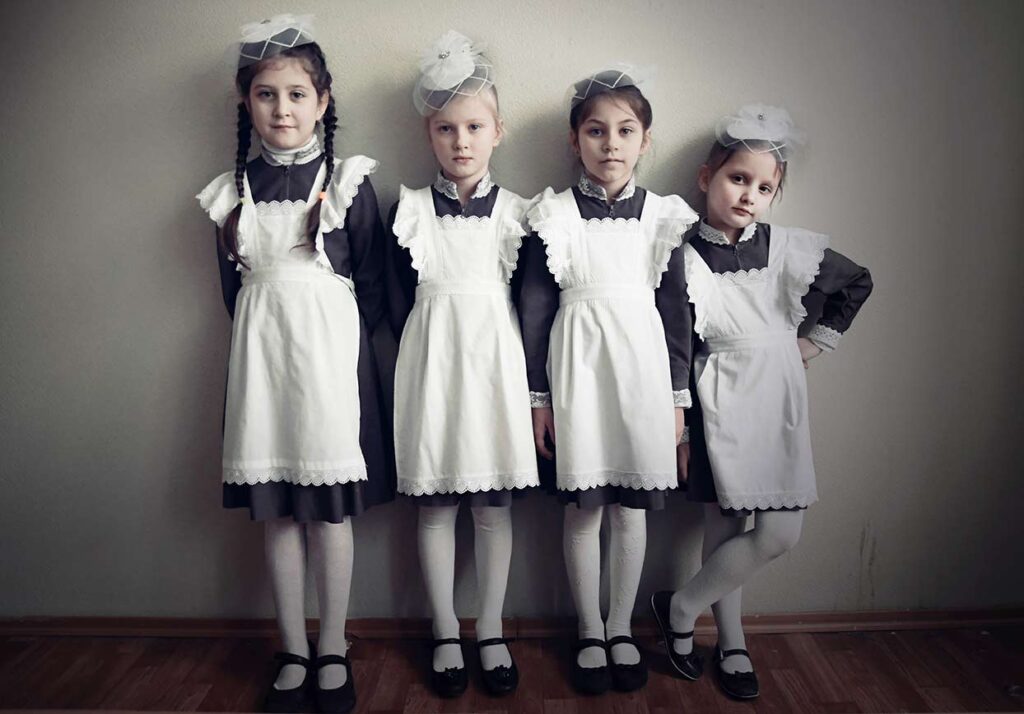AUDE OSNOWYCZ | UKRAINE | A YOUTH BETWEEN WAR AND PEACE
Published in Lens Magazine Issue #85. October 2021
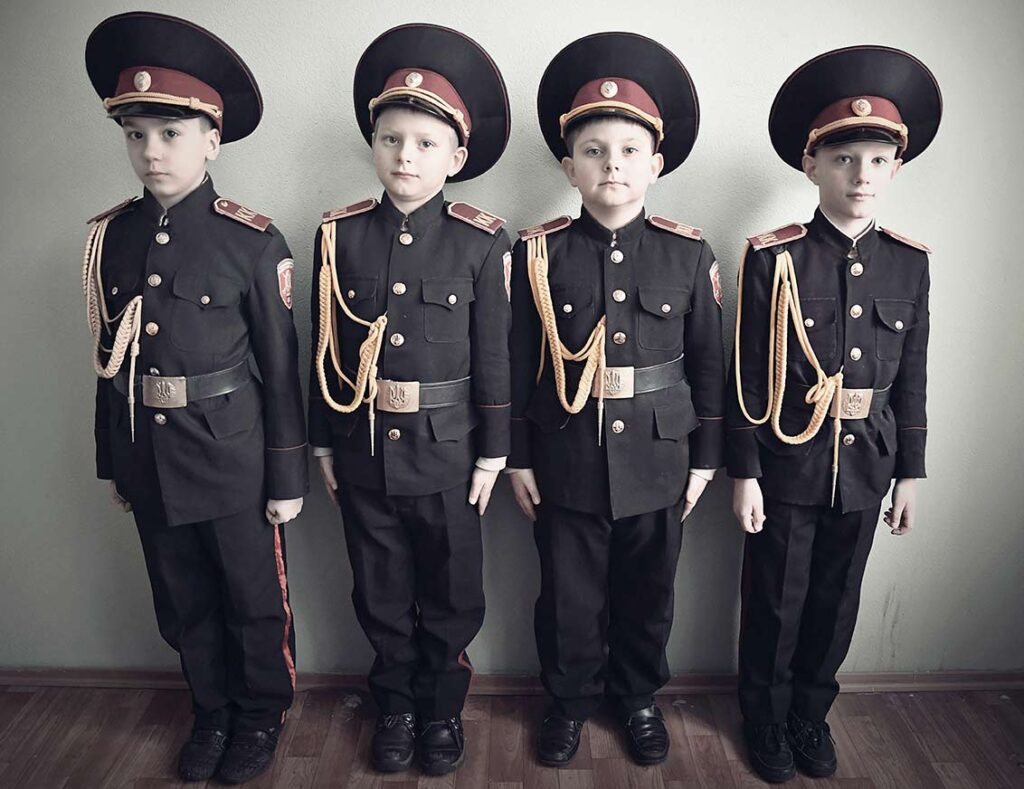
Aude Osnowycz © All rights reserved.
Ukraine is in the throes of an endless conflict between the Donbas territories and the government in Kyiv. Despite the ceasefire agreements, the war continues and is bogged down, profoundly transforming the whole of Ukrainian society and, above all, the youth.
“It is over 38° C on this Sunday in August in Donetsk, the streets are empty, a few kilometers away, it’s the front line, sporadic detentions. nothing abnormal, it’s routine here!” So explains Oleg, an impressive man in his forties, a former mercenary who once fought in Chechnya and Afghanistan.
Oleg takes us to the scene of a “military game,” a life-size war game around Donetsk. “Today, we will imitate the war in Syria!” He exclaims. We get into a military truck with a dozen pre-teens or young adults, five other trucks follow us, in all about sixty young people who have come like every Sunday to “play” at war, which has ravaged the region for four years. Running a whole day under the scorching sun, two teams will compete against each other by simulating scenarios inspired by military operations. They will be equipped with very similar replicas of real weapons, which shoot harmless balls 6 to 8 mm in diameter made of plastic or corn starch.
Players are outfitted head to toe with military gear and even use a real tank. They will play to hide behind the thickets, to fight against an enemy who wants to seize the area.
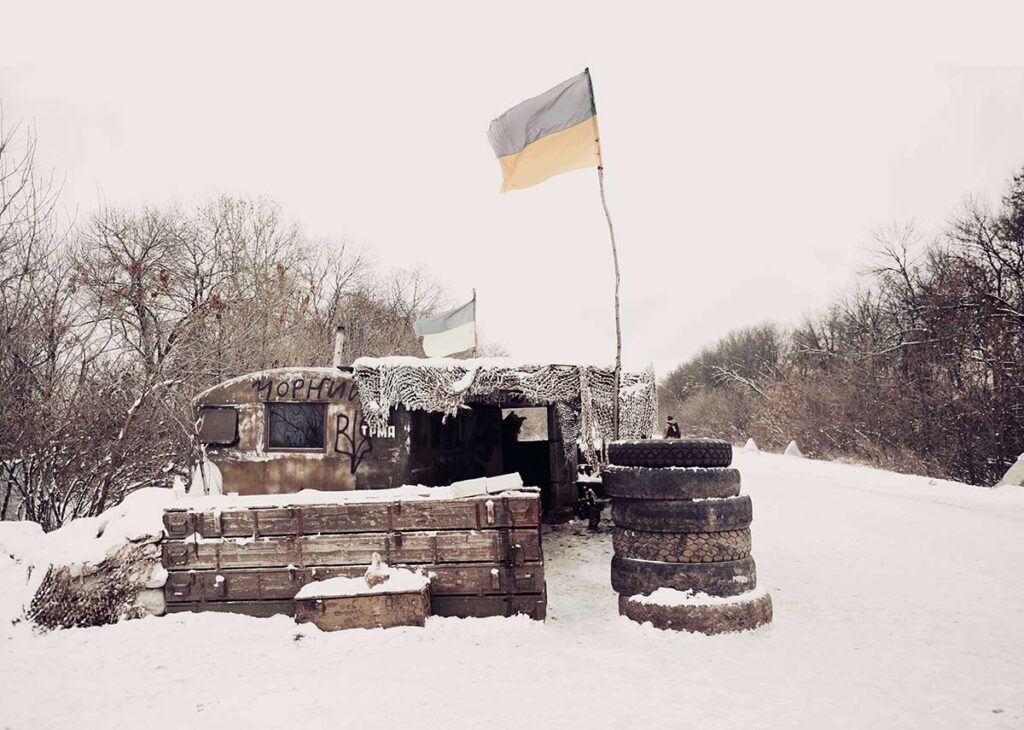
Aude Osnowycz © All rights reserved.
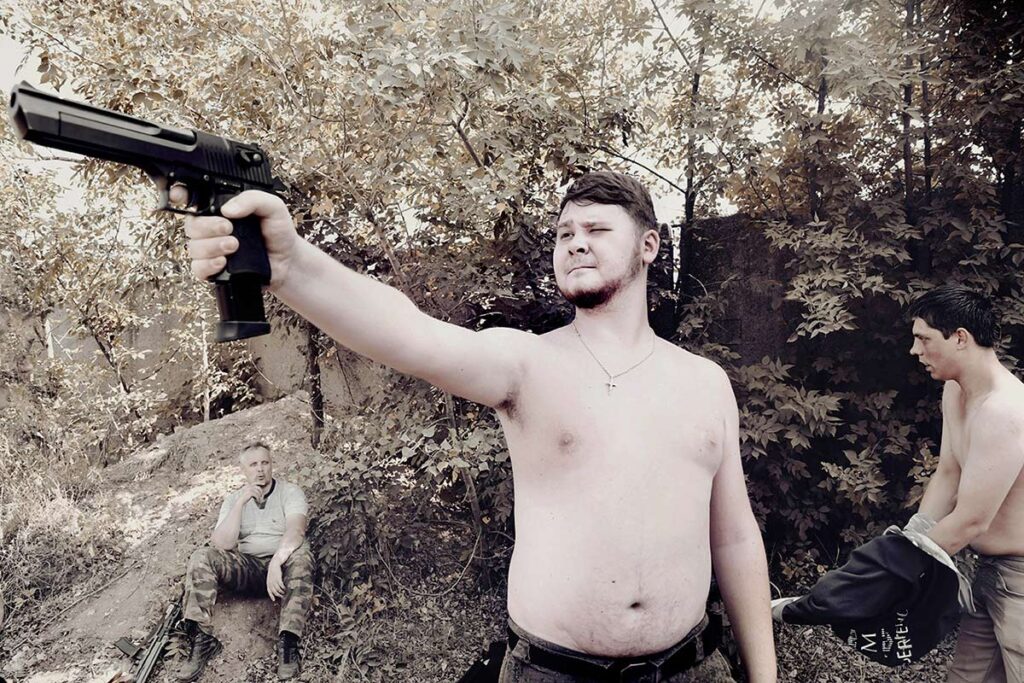
Aude Osnowycz © All rights reserved.
For the exercise, Sergei, just 18 years old and fully dressed in a camouflage suit, is one of the enemy troops: “We go inside buildings as if we were another army. Sometimes we trap them.”
These military games are sponsored and funded by the Ministry of Defense of the Donetsk People’s Republic, but behind these games lies another reality, a real enlistment of the youth of the separatist province. Because the war in Donbas today is, above all, a war of minds, a war of propaganda, the conflict itself has become more of trench warfare where major offensives are rare.
After a succession of accusations on the “Neo-Nazi” character of contemporary Ukraine and Ukraine, Oleg, our guide, explains emphatically: “Today, our country lives, is built, develops, our children are at home. ‘school. Right now, our brothers, our fathers, are on the front lines protecting our peaceful life.
No country in the world has survived what the Donetsk People’s Republic is experiencing. We haven’t been broken, and no one will ever break us. Any enemy must remember that the Donbas is invincible. And I am sure that our country will live and that we will prosper”.
But, no offense to Oleg, the reality is quite different. All sources of the local economy have dried up, leaving those who have been unable to flee to their increasingly impoverished homes. This vulnerable population is estimated at around 4 million people. Launched in the spring of 2014, the Donbas war killed more than 10,000 people. Since the start of the year, the rate of casualties and injuries has slowed down, nonetheless standing at around 420 people, according to a partial OSCE.
For several months, the separatist authorities have refused all accreditation to most Western journalists, and, in 2015, they expelled the main foreign NGOs. Donbas oligarch and steel tycoon Rinat Akhmetov, who helped nearly 100,000 people, had to close his fund for fear of having his assets confiscated.

“Today, the two self-proclaimed republics of Donetsk and Luhansk could not live without humanitarian aid from Russia,” concludes Alain Aeschlimann, head of the Ukrainian delegation of the International Committee of the Red Cross, one of the very few international organizations present on both sides of the front line.
Albeit at an irregular pace, huge white trucks bearing the image of the Russian eagle continue to cross the border from East to West, but the contents of the cargoes remain hidden from the Western chanceries.
For two years, the Minsk II memorandum had been the only framework for settling the conflict imposed on Ukrainians and Russians, with the behind-the-scenes presence of the leaders of the self-proclaimed republics of Donetsk and Lugansk.
But despite some progress on prisoner exchanges, the main elements of the “package of measures” are only virtual: ceasefire, withdrawal of heavy weapons from either side of the line, restoration of Ukraine’s borders. Withdrawal of foreign troops (Russian, regular or irregular) from Donbas, the constitutional reform of Ukraine with a view to a special status for the Donetsk and Lugansk regions …
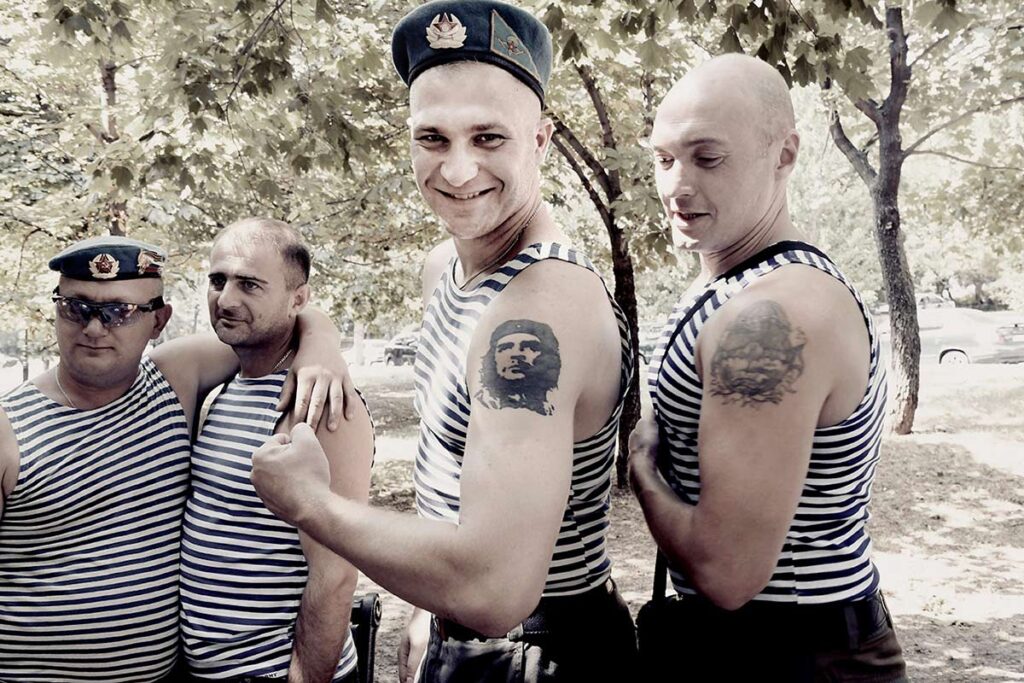
Lioudmila, 19, also participates in the game; she dreams of defending her homeland against the Ukrainian “fascists,” but the young girl is more sensitive and tells us about the waking nightmares shared by her family. “My dad is terrified. If an unforeseen event happens, he starts shouting: “let’s run into the cellar!”… “The little one, too, screams in his sleep, he wakes up and goes up to hide. The feeling of panic did not leave him.”
Back in Donetsk, the atmosphere is joyful among the small troop of young people accompanying us. Tonight, meet in a somewhat underground café in Donetsk, but be careful at 10 p.m. everyone will have to go home and not go out under the curfew. In Donetsk, it is war, and the evenings are the times when shells, rockets, and other firearms are most active. Indeed in order to circumvent the ceasefire agreements, the two armies fight at night; it is more discreet.
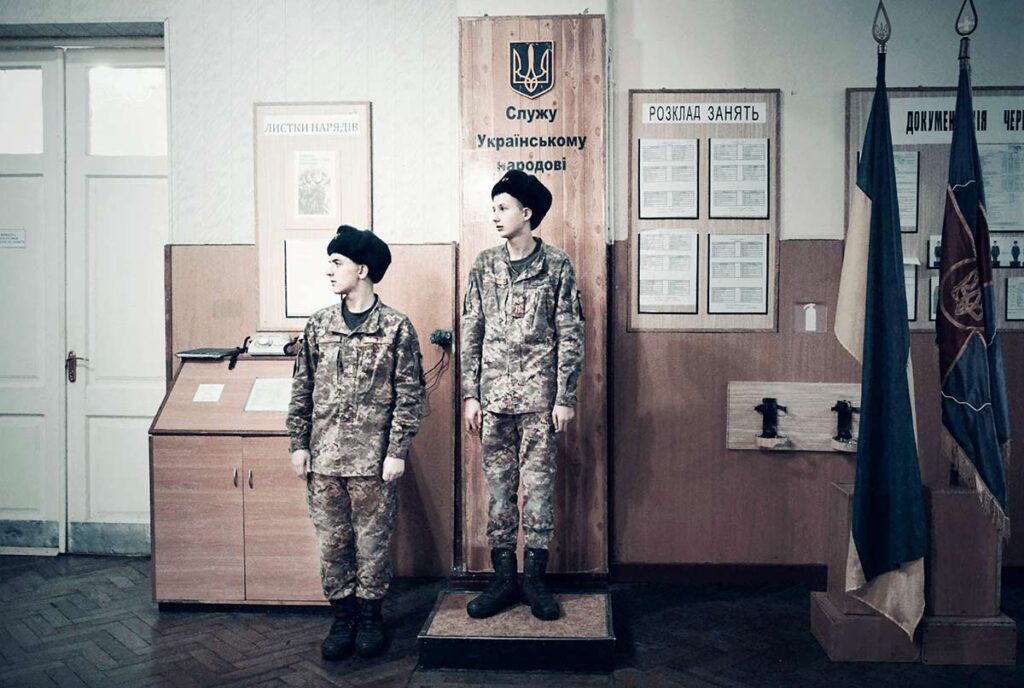
Aude Osnowycz © All rights reserved.
In the small bar, we meet Corsican or Catalan fighters, others from the secessionist republics of Abkhazia or South Ossetia. Wladimir Poutine is taken to the skies, the West is scolded, but the young guitarist of the punk group which performs on stage, Sacha, 20 years old, whispered to me, “He does not make-believe what they say, here all the world is being watched, so one does not say anything in public, but many are starting to complain about the situation here and doubt the validity of this war, I would just like to live in peace and play my guitar as I see fit.”
Many young people, like Sacha, only aspire to live a normal life; the Putinian discourse with Soviet, anti-capitalist and anti-Western overtones is not to the taste of the younger generations who only dream of pop music and punk in English. They dream about trips to Europe and the United States, but above all, to free themselves from the shackles of the past and look to the future, which for them lies in the West.
Because the war in the Donbas arises from a misunderstanding between two worlds: The West, which wants to go too fast, imagines itself in the future, in perpetual evolution like the capital, Kyiv, polyglot, turned towards the West with its luxury stores. It’s connected to young people and its trendy bars. The East seeks its affirmation in the past. This Soviet world, to which Russia wants to be the heir, a world which offered a goal, a meaning, an identity…
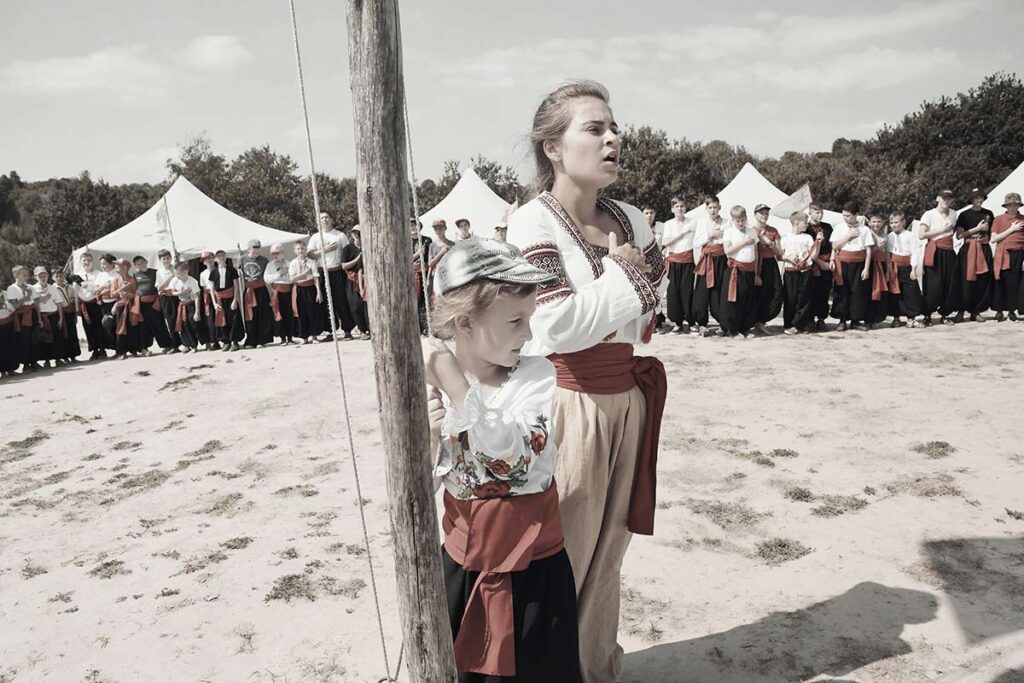
Back in Kyiv and in the West, one can easily forget that war exists; the new generation is fighting not to forget what was dreamed and built in the fumes of Maidan, a European, democratic, and corruption-free Ukraine. But resistance to reforms is fierce, and the old guard is holding on; scandals, financial, political crisis, unemployment, and peace which remains wishful thinking, have plunged the country into disenchantment. The nationalist far-right is increasingly present.
So we unearth the ghosts of the past and reinvent history.
The separatists of Donetsk moreover call the Ukrainians pejoratively “bandéristes,” synonymous with fascists. Hundreds of children are sent to Cossack or paramilitary youth camps. We reinvent history, but above all, we learn to fight, wield the Kalashnikov, and hate Russian influence in all its forms. Yet another youth is simply trying to find a normal life. Whether punks, hipsters, ravers, or activists, they are trying to create a new Ukraine in their image, west-facing, modern and European.
Since the beginning of the conflict, the Cossack patriotic camps have been taken by storm every summer. Young people from 5 to 18 years old follow the same elementary paramilitary training – obstacle course, small arms shooting, knife throwing, hopak lessons, the traditional martial art of the Cossacks, athletic exercises… and learning community life the history of his ancestors.
“To be Cossack is to be proud of your roots, to be a Ukrainian patriot, to believe in God, but also to be open to others. You are not born a Cossack; you become one. It is first and foremost an individual and spiritual process.
The Cossacks made Ukraine, and our history cannot be understood without them.” explains an instructor. Yet in the current context, between pro-Russian propaganda on the one hand and Ukrainian resistance on the other, “this homecoming” risks dividing the Ukrainian society into an increasingly irreversible division.
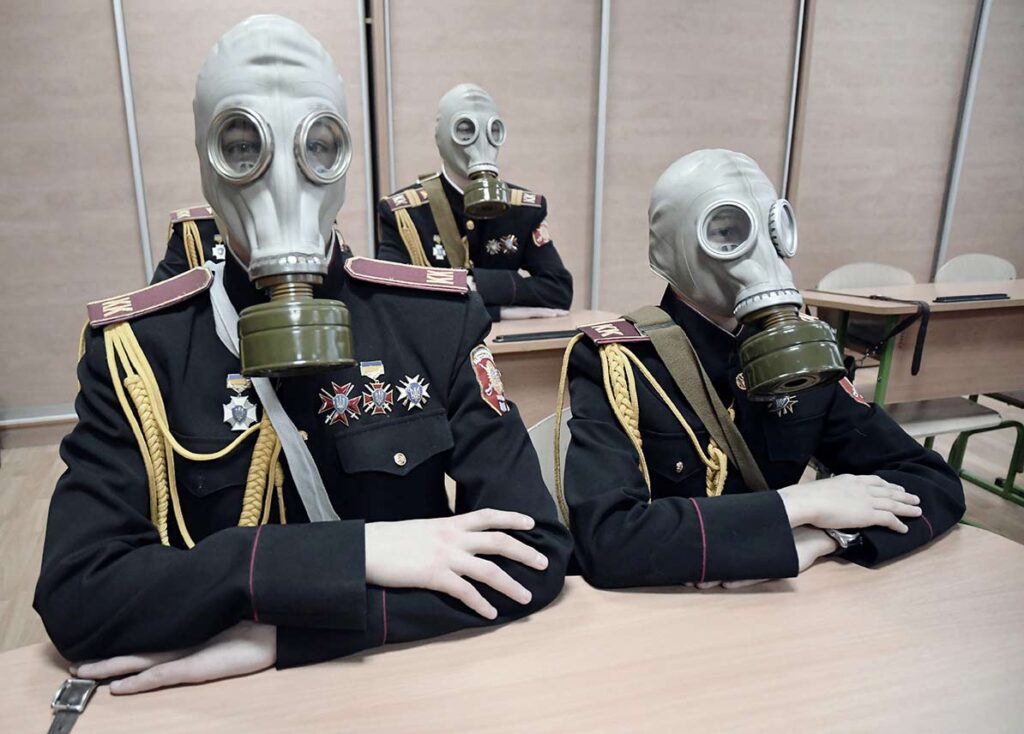
Aude Osnowycz © All rights reserved.
AUDE OSNOWYCZ
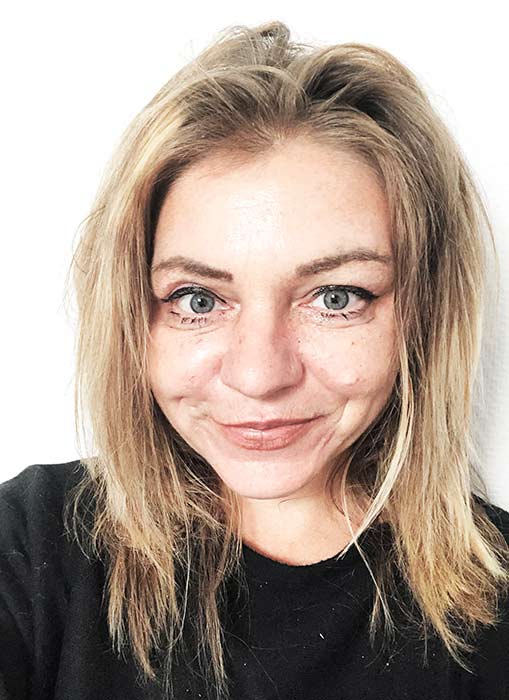
Graduated with a master’s degree in geopolitics, Aude Osnowycz worked in various professions before turning to photography.
She decided in 2011 to become a photojournalist and moved to Tunisia. She spent four years documenting the impacts of the Arab Spring (in Tunisia, Egypt, Algeria, Iraq, Syria, Libya), particularly on issues related to minorities, women, and genre.
Osnowycz’s work has been published in numerous international magazines such as Le Monde, Marie Claire, GEO, OBS, The New York Times, Médiapart, the Guardian, Vanity fair, Newsweek, etc …
She has also exhibited her work at the phémina festival, RDVI, Barrob Objectif, Les Photographiques du Mans, and the Women Exposing themselves festival, chosen as the finalist for the Mentor Award and the Roger Pic Award.
Recently, she decided to start a long-term project focused on the post-Soviet universe. This more intimate work questions both the Slavic soul and her family’s past and reflects the gap between new and old generations, some carried by Soviet Putinian values the other by Western values. She also worked on the Putin generation in Russia, Belarusian exiles, and the militarization of children in the post-Soviet space. In general, she tries to paint a portrait of this gray area wedged between Russia and Europe, little covered by the media but of primary geostrategic importance.

